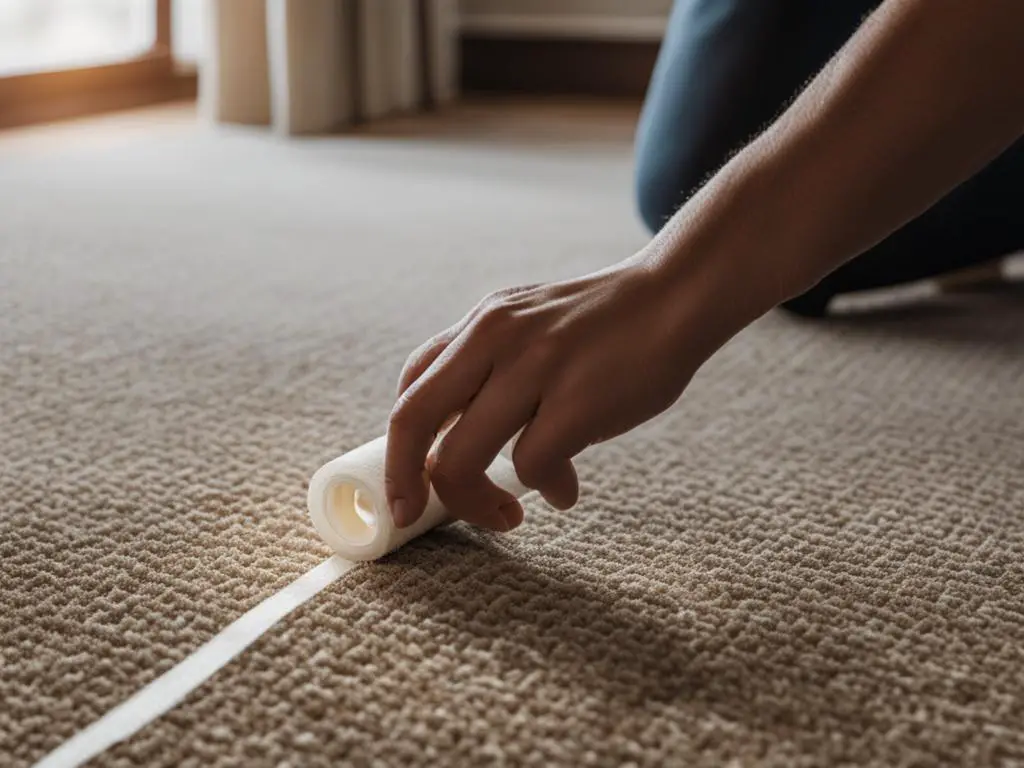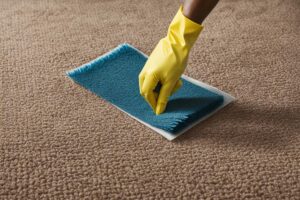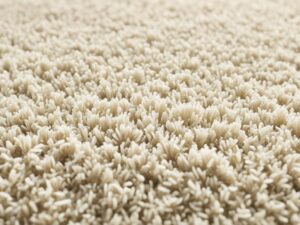Removing masking tape from carpet can be a tricky task, but with the right methods, you can successfully remove the tape and restore the cleanliness of your carpet. Whether you’re dealing with fresh tape or dried adhesive, there are effective ways to remove it without causing damage or leaving residue behind.
In this article, we will guide you through the best ways to remove masking tape from carpet and provide expert tips for effective tape removal.
Key Takeaways:
- Removing masking tape from carpet is possible with the right methods.
- Before removing the tape, remove any excess adhesive.
- Distilled white vinegar, dish soap, WD-40, rubbing alcohol, and an iron can all be used to remove masking tape from carpet.
- Test any cleaning solutions in an inconspicuous area before applying them to the larger stain.
- If the tape residue is stubborn or if you prefer professional assistance, consider hiring a professional carpet cleaner.
Removing Excess Adhesive
Before attempting to remove masking tape from carpet, it’s important to remove any excess adhesive.
If the glue is fresh, dab at the spot with a towel to soak up as much of the glue as possible.
For dried glue, use a damp towel with warm water to soften the adhesive. Be careful not to apply too much pressure to prevent pushing the glue deeper into the carpet.
Here is a step-by-step guide on how to remove excess adhesive from carpet:
- Prepare a towel and warm water.
- If the adhesive is fresh, gently dab the spot with the towel to soak up the excess glue.
- For dried glue, moisten the towel with warm water and carefully dampen the area with the adhesive. Allow the warm water to soften the adhesive.
- Use the towel to gently blot and lift the softened adhesive from the carpet fibers.
- Continue blotting until no more adhesive transfers onto the towel.
By removing excess adhesive first, you’ll have a better chance of successfully removing the masking tape without leaving behind any residue or marks on your carpet.
Expert Tip:
Be patient and gentle when removing excess adhesive. Aggressive scrubbing or rubbing can damage the carpet fibers.
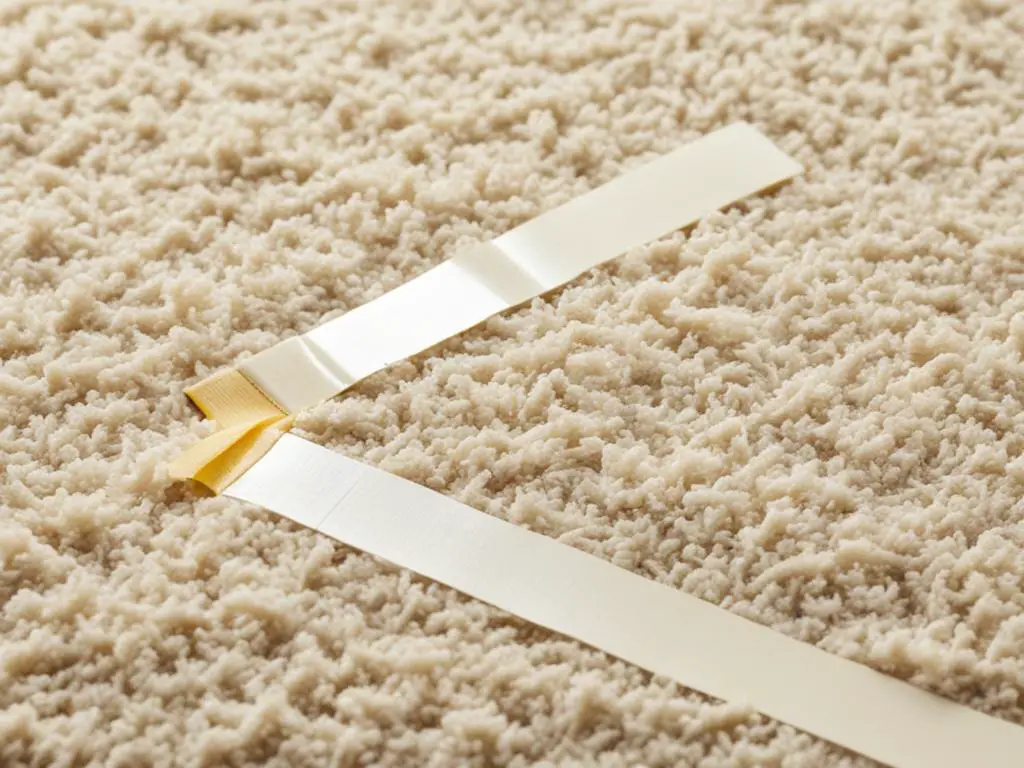
Using Distilled White Vinegar
Distilled white vinegar is an effective natural solution for removing masking tape from carpet. Vinegar contains acetic acid, which helps break down the adhesive and loosen the tape residue. Here’s how you can use vinegar to remove tape residue from your carpet:
- Start by pouring vinegar onto a cloth.
- Wipe the cloth over the area where the tape residue is present, making sure to adequately wet the spot.
- Leave the vinegar on the tape for at least 15 minutes to allow it to work its magic and loosen the adhesive.
- After 15 minutes, use a wet cloth to gently scrub the area, removing any remaining adhesive.
- Once the adhesive is gone, let the area dry naturally. Avoid walking on the carpet until it is completely dry.
It’s important to note that vinegar may not work as effectively on all types of tape residue, especially if it’s been left on the carpet for a long time or if the residue is particularly stubborn. In such cases, you may need to try alternative methods or seek professional carpet cleaning assistance.
Remember to always test the vinegar in an inconspicuous area of the carpet before applying it to the visible stain. This will help ensure that the vinegar does not cause any discoloration or damage to your carpet fibers.
While using vinegar is a natural and cost-effective method, it may not be suitable for all carpet types. If you’re unsure or hesitant, it’s best to consult a professional carpet cleaner to avoid any potential damage to your carpet.
Benefits of Using Distilled White Vinegar for Tape Residue Removal
“Vinegar is a versatile cleaning agent that can effectively remove tape residue from carpet without using harsh chemicals. It’s a natural and eco-friendly solution that many homeowners swear by for cleaning a variety of stains and messes.”
By using distilled white vinegar, you can remove tape residue from your carpet in a safe and eco-friendly way. Vinegar not only eliminates the adhesive but also helps to neutralize any odors that may be left behind.
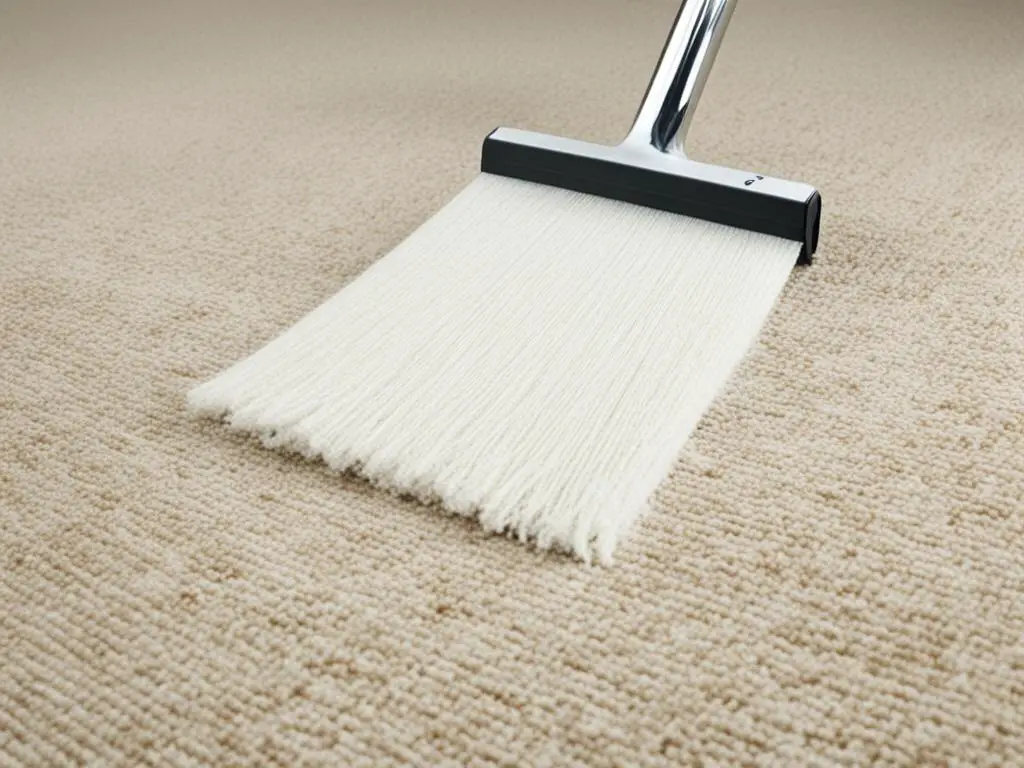
Continue reading the article to discover more effective methods for removing tape residue from your carpet.
Applying Dish Soap
When it comes to removing tape residue from your carpet, dish soap can be a great alternative to vinegar. By following these simple steps, you can effectively eliminate sticky adhesive and restore the cleanliness of your carpet.
To begin, create a mixture of warm water and dish soap. Combine approximately one tablespoon of dish soap with one cup of warm water. Stir the mixture until the soap is well-dissolved.
Next, apply the dish soap mixture directly to the tape residue on your carpet. Use a cloth to gently scrub the spot, making sure to cover the entire adhesive area. However, it’s important to avoid applying too much pressure as this can damage the carpet fibers.
After scrubbing, use a clean cloth to pat the area dry. It’s crucial to remove any excess moisture to prevent mold or mildew growth. Allow the carpet to air dry completely.
Applying dish soap to remove tape residue from your carpet is a simple yet effective hack. The dish soap’s cleaning properties help break down the adhesive, making it easier to remove. Give it a try and restore the pristine condition of your carpet.
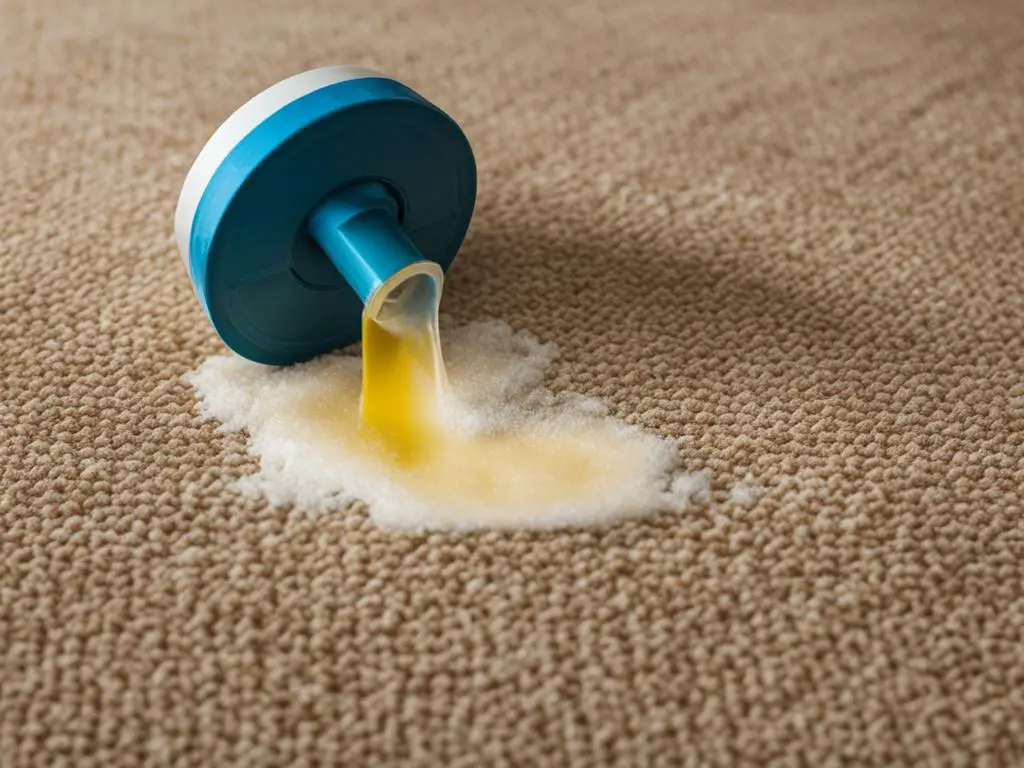
Cleaning Tips:
- Always test the dish soap mixture on a small, inconspicuous area of the carpet to ensure it doesn’t cause any discoloration or damage.
- If the tape residue proves stubborn, repeat the process or try alternative methods mentioned in this article.
- For larger or more extensive tape residue, consider seeking professional carpet cleaning services for a thorough and effective solution.
Using WD-40
When it comes to removing adhesive residue from your carpet, WD-40 is a powerful tool in your arsenal. Follow these simple steps to effectively get rid of tape residue from your carpet.
To begin, gather a plastic knife or paint scraper to scrape off as much tape as possible from the carpet fibers. This will help minimize the amount of adhesive left behind.
Once you’ve scraped off the bulk of the tape, it’s time to bring out the WD-40. Dab a small amount of WD-40 onto the remaining adhesive and allow it to sit for 15 minutes. This will help break down the adhesive and make it easier to remove.
After the 15 minutes have passed, take your plastic knife or paint scraper and scrape off as much adhesive as you can. Be gentle yet thorough, ensuring you’re not damaging the carpet fibers.
Finally, complete the cleanup by using a carpet cleaner specifically designed for adhesive removal, such as Goo Gone. Apply the carpet cleaner according to the manufacturer’s instructions and gently blot the area with a clean cloth or sponge.
With the power of WD-40 and a little bit of patience, you can effectively remove tape residue from your carpet, leaving it clean and free from any sticky mess.
The Benefits of Using WD-40
“WD-40 is a versatile and effective solution for removing adhesive residue from carpets without causing any damage.” – CarpetCleaningExpert.com
- Powerful adhesive breakdown: WD-40’s unique formula penetrates and loosens the adhesive, making it easier to remove.
- Gentle on carpet fibers: Unlike harsh chemicals, WD-40 won’t cause discoloration or damage to your carpet.
- Easy application: The spray nozzle allows for precise application, ensuring you only target the adhesive residue.
With these benefits in mind, it’s no wonder WD-40 is a popular choice for tape residue removal on carpets.
Dabbing with Rubbing Alcohol
Rubbing alcohol or vodka can be used to remove tape adhesive from carpet. Dampen a clean cloth or paper towel with rubbing alcohol and press it into the carpet. Rub slightly to remove the adhesive residue. For stubborn adhesive, lay an alcohol-soaked cloth over the spot for about 10-15 minutes before rubbing. Test the rubbing alcohol in an inconspicuous spot before using it on a visible location.
If you’re dealing with masking tape stains on your carpet, rubbing alcohol can be a handy solution. This versatile liquid effectively cuts through adhesive residue and helps restore your carpet’s pristine appearance. Follow these simple steps to eliminate tape adhesive from your carpet:
Gather the necessary materials:
- Clean cloth or paper towel
- Rubbing alcohol or vodka
Step-by-step process:
- Dampen a clean cloth or paper towel with rubbing alcohol.
- Press the cloth into the carpet, directly covering the adhesive residue.
- Gently rub the cloth in a circular motion to remove the adhesive.
- If the adhesive is stubborn, lay an alcohol-soaked cloth over the spot and let it sit for 10-15 minutes to soften the residue.
- After soaking, rub the area gently to remove the softened adhesive.
- Always test the rubbing alcohol in an inconspicuous area of the carpet before using it on a visible spot.
Remember to avoid excessive rubbing or scrubbing, as this may damage the carpet fibers. By using rubbing alcohol or vodka, you can effectively eliminate tape adhesive from your carpet, leaving it clean and free from stains.
Using an Iron
When it comes to removing tape residue from carpet, using an iron can be one of the best methods. This technique allows you to transfer the adhesive from the carpet to a paper towel, leaving your carpet clean and tape-free.
To utilize this method, follow these simple steps:
- Set your iron to the highest steam setting.
- Place a paper towel over the tape residue on the carpet.
- Cover the paper towel with a clean cloth.
- Iron over the cloth and paper towel for approximately 10 seconds. Apply gentle pressure.
- After ironing, carefully pull back the cloth and paper towel.
By following these steps, the adhesive should be transferred from the carpet to the paper towel, effectively removing the tape residue.
It’s essential to exercise caution when working with a hot iron. Always test this method on a small inconspicuous area of the carpet before moving on to larger areas.
Iron Method for Tape Removal from Carpet:
| Steps | Description |
|---|---|
| Step 1 | Set the iron to the highest steam setting. |
| Step 2 | Place a paper towel over the tape residue on the carpet. |
| Step 3 | Cover the paper towel with a clean cloth. |
| Step 4 | Iron over the cloth and paper towel for approximately 10 seconds. Apply gentle pressure. |
| Step 5 | Carefully pull back the cloth and paper towel. |
This method works by utilizing heat and steam to loosen the adhesive, allowing it to transfer from the carpet to the paper towel. The result is a clean and tape-free carpet.
Now that you know how to use an iron to remove tape residue from carpet, let’s move on to the next section for more helpful tips.
Conclusion
Removing masking tape from carpet can be a frustrating task, but with the right techniques, you can achieve excellent results. Whether you choose to use vinegar, dish soap, WD-40, rubbing alcohol, or an iron, it is crucial to test the method on a small, inconspicuous area before tackling the larger stain.
If you encounter stubborn tape residue or would prefer professional assistance, consider hiring a reputable carpet cleaner. They have the expertise and specialized equipment to ensure a thorough and safe cleaning process.
Remember to carefully follow the instructions and precautions provided by the cleaning solution you choose. Each method has its specific application instructions, which should be respected to avoid any damage to your carpet.
By utilizing these tips and tricks, you can successfully remove masking tape from your carpet and restore its clean appearance. Don’t let tape residue spoil the beauty of your carpet – take action today and enjoy a tape-free floor!
